Who does not know from His Childhood Lollipops "Barbaris" or a carbonated drink with the taste of Barbaris, the smell and aroma of which includes a pleasant sourness, and sweetness. And all this thanks to an incredibly beautiful decorative plant of Barbaris, on whose branches are a hurry and fragrant berries. Many gardeners in recent years are striving to grow barkaris's bubbaris on their plot, as it not only brings the harvest of berries, but also is a valuable decorative decoration of the site.
To date, breeders brought a huge number of varieties of this culture, which are characterized by the peculiarities of cultivation and winter hardiness. The last fact is especially important if you wish to plant Barbaris Kuste in Siberia, where the weather conditions are more severe. If you comply with some rules and acquiring a frost-resistant variety of barbaris, you can easily grow this beautiful plant even in the northernmost areas of the country.
In this article, we consider the peculiarities of the cultivation of Barbaris under the conditions of Siberia, as well as we present the characteristics of the varieties of this decorative plant, which are suitable for growing in this part of Russia.
Features and Botanical Description Barbaris
Barbaris is a decorative exotic plant, which, despite its origin, perfectly transfers even very complex cultivation conditions, can well adapt both drought and to strong cold, which are not uncommon for the Siberia climate. Barberry plants are shrubs or small trees, which relate to the numerous family of barberry and the same kind. This unpretentious shrub was widespread almost all over the world. The natural area of \u200b\u200bhabitat is the mountainous terrain of the northern hemisphere, and more specifically the territory of Russia, North America, the Caucasus, as well as Siberia.
The scientific name of the plant "Barbaris" occurred from the Arabic word "Beiberi", which denotes "similar to the sink" or "having the shape of the shell." Such a definition is associated with the form of flower petals of this plant, which are very reminiscent of the revealed sink.
Barbaris description:
- The genus barberries is quite extensive and includes a huge number of species and varieties that can have many differences.
- Barbaris is found a long-term deciduous, native and evergreen, depending on the characteristics of which in the fall of bushes look completely different.
- Bushes or small trees of Barbaris may differ in height. On average, in nature you can see small plants up to 30 cm high. However, larger copies of which reaches 3 meters. Gardeners for their sites prefer to acquire a central height barberry to create harmonious landscape compositions.
- Barbaris bushes are formed by reprehensive ribbed shoots of a dark brown shade. At the young age, shoots grow at some distance from each other, forming rare bushes. With age, the bushes become more dense and dense.
- Stems thick sleeps with small leaves, the diameter of which can be approximately 1-3 cm. On the form of a leaf plate of barberry oval oblong.
- The leaves are one of the most important jewelry of this decorative shrub, as depending on the variety, they have a completely different unpredictable shade. There are Barberry bushes with green foliage in summer and red in autumn, with bright yellow foliage in summer and orange-yellow in spring, with red-brown summer and bright red in autumn, with reddish foliage and a small salad candy along the edge.
- Barberry leaves are smooth, sometimes can be leathery. They grow in the form of small beams, and on the shoots of the current year the leaves grow single spirals.
- Barbaris is distinguished by the presence of a large number of barns, which can be single, double and triple, located beams. They are placed at the base of the kidneys. Spines can be solid or soft depending on the specific grade of the plant.
- Barberry bloom begins at the end of spring, however, for Siberia this period can be slightly shifted, and blooming can begin a little later - at the beginning of summer. For duration, flowering is about 3 weeks.
- Flowers Barbaris are small, consist of beautiful small petals with several neckers. The color of the petals depends on the variety of the plant, but most often there are flowers of yellow, golden, white, orange or reddish tint. Flowers can be located singly and be collected in busy or palate inflorescences.
- During flowering, the flowers exude a very pleasant delicious fragrance that attracts bees. Barbaris is considered a very good honey.
- Barberry fruits ripen in autumn and have completely different sizes and shapes. Most often there are oval berries or round. They differ berries and color, which can be different: red, burgundy, scarlet, purple, golden, black, white.
- To taste, berries also differ: there are varieties with edible berries and inedible. At the same time, an acidic, sweet and bitter taste can be combined in one berry.
- Barbaris is considered a very unpretentious plant, which is well adapted to both heat and cold. However, for the territory of Siberia, it is better to choose more frost-resistant and not exotic varieties with which there will not be problems in the future during cultivation.
- This plant perfectly tolerates the rank of air, so the planting of Barbaris can be done in an urban feature.
Varieta Barbaris for Siberia
To date, more than 170 different types of Barbaris are known, on the basis of which breeders from around the world brought a variety of decorative varieties of this culture. Before scientists stood a special question, to bring varieties that will grow beautifully and be froning in the conditions of northern regions, such as Siberia. Consider the most popular types and varieties of Barbaris, who received their distribution in Siberia.
Barbaris ordinary in Siberia
- This type of barbaris is the most common and how it is impossible to suit the harsh climate of Siberia.
- It is a rather tall shrub, which in height can reach about 3 m.
- The territory of the Caucasus, Southern Europe is considered the natural area of \u200b\u200bhabitat of this species, but some of its varieties are widely distributed in Siberia.
- A bush is formed by grayish-brown shoots that are tightly swept up with triple spines to 2 cm long.
- Barberry leaves of an ordinary oblong shape, a sheet plate is very thin, with a sawd edge. From above, the sheet has a dark green color, and below - gray-green shade.
- Flowers are small, bright yellow colors are collected in carlike inflorescences, which can only reach only 6 cm. Blossoms last about 3 weeks, during which a wonderful aroma attracts bees and other insects from the Barbaris bush.
- The berries are oblong, have bright red.
- This species withstands frost to minus 35 degrees.
Popular varieties:
- Lutea. The height of the bush of this variety reaches 2 m, is formed by shoots of a yellow shade. Leaves oblong, green shade. Barberry Yellow berries, sour. On the territory of Siberia, it is recommended to plant on solar sites.
- Atropurpur. The maximum height of the shrub of this variety of Barbaris is 2 meters. A bush is formed by subtle and flexible sparkling shoots of a red-burgundy shade. Oval leaves with a toothed edge, have a dark red color. Barberry berries Atropurpur bright red, with small sourness, ripen in October.
- Alba variage. This variety is also suitable for cultivation in Siberia. A very beautiful and decorative plant, which pleases the gardeners with its motley foliage, painted in green with cream divorces. Berries also have a white-cream color. The plant is very unpretentious and frost-resistant, requires landing in an outdoor sunny place.
Barbaris Tunberg in Siberia
- This type of barbaris is also suitable for cultivation in Siberia, the main thing is to carefully select a specific variety of species.
- It is a very beautiful and decorative shrub, which is grown mainly to decorate the site, as its berries are completely intolerable.
- The height of the coastal is approximately 50-100 cm.
- The main feature of this kind - the shrub shoots grow straight horizontally, deviating only a little with age. The shoots have a yellowish or purple shade depending on the variety.
- The shoots have very thin and solid spines, the length of which is 1 cm.
- Leaves oblong up to 3 cm long, in the summer, have a bright green shade, and in the spring it is painted in all shades of red.
- A kind of unpretentious, grows perfectly in any conditions, but in the territory of Siberia requires shelter for the first three years after landing.
Popular varieties:
- Barbaris Tunberg Atropurpur. This variety is best suited for cultivation in Siberia. In height, the plant reaches 1 m. The shoots are covered with small oblong leaves of the purple shade, which sometimes have a purple shade. Berries are long, bright red. Planting the plant of this variety is recommended on solar sites, it is perfectly withstanding the decrease in temperature, but does not like moisture stagnation.
- Barbaris Golden Ring. Shrub grows up to 3 meters in height, formed by purple shoots. The leaves are oblong up to 4 cm long, have a bright purple shade with a thin yellow border along the edge. Flowers are yellow-red collected in inflorescences of 3-5 pieces. Berries are oblong, bright red.
Barbaris Amur in Siberia
- The natural range of this species is the territory of the Far East, where the plant prefers to grow on the shores of rivers, small clones and forest edges.
- Height can reach about 3-3.5 m.
- A shrub is formed by the spontaneous shoots of a grayish green, sometimes a brownish shade, which is thickly covered with spines to 2 cm long.
- Oval leaves, in summer, have a gray-green shade, and in the fall acquire a little reddish color.
- Flowers are small, bright yellow, collected in small inflorescences, exuded a pleasant fragrance.
- At the beginning of November, oblong red berries begin to ripen on shoots.
Barbaris reproduction in Siberia: the most common ways
Barbaris in Siberia, landing and care for which is practically no different from its cultivation in other areas, will become an excellent addition to any landscape design. It is possible to grow this beautiful decorative plant yourself, using Siberia Methods for the harsh climate. For the breeding of Barbaris, several methods are suitable, each of which has its own characteristics and nuances: seed reproduction, reproduction of stalling and dividing the bush, as well as with the help of melting. Consider the use of each method of reproduction under conditions of Siberia.
Semyon breeding of Barbaris in Siberia
- This method of breeding on the territory of Siberia, as in other areas, takes a lot of time and strength, since full-fledged seedlings will turn out in a few years.
- The seeds or bones of Barbaris can be bought in a specialized store, and if you have an adult bush of Barbaris on my site or a neighbor's plot, you can collect them yourself.
- For this, ripe barkaris berries collect and get bone from them.
- After that, the bones are lowered for several hours into a weak mortar solution, and then dried them.
- Barbaris seeds can be soiled under autumn, however, in conditions of Siberia, it is best to do a spring landing when the soil warms well in about May.
- Prior to this, the seeds are placed in the headband and sprinkle soil in the container. After that, they put the container in the bottom of the refrigerator. In such a state, the seeds pass the stratification process within three months.
- In the spring on the prepared garden, the grooves must be made and sowing the seeds of Barbaris in them, and then sprinkle with the soil and cover the film to the first germination.
- Regularly seedlings are watered and loosen the soil. When they appear 3-5 leaves, they are seated at a distance of 20 cm from each other.
- Thus, seedlings are fought for two years. For the winter, it is necessary to strengthen the foliage and twig.
Barberry reproduction in Siberia in Siberia
- This method of reproduction is considered the most popular and suitable for the territory of Siberia, as the seedlings are rapidly rooted and becoming strong before the onset of winter cold.
- It is necessary to harvest the cuttings for breeding at the end of May or in early June, early in the morning. To do this, choose healthy and strong shoots and cut the cuttings with an acute 12-12 cm length.
- Then, in the tank, intelligate the solution of the rooting agent and place the prepared cuttings for several hours into it. At the expiration of which the seating material is thoroughly washed in warm water.
- To root the cuttings best in the greenhouse, where to prepare a suitable soil. You can land with cuttings and in the open soil, top with a film or plastic bottles.
- The soil mixture for rooting should consist of a delicate land, humid and peat in equal parts.
- The soil is well moisturized and rooted with cuttings.
- Daily cuttings need to be tired and moisturized, after two weeks you can remove the shelter.
- Saplings obtained from Chenkov, experienced gardeners are recommended to grow on protected beds for two years, and after that it is planted for a permanent place. Thus, seedlings will be prepared for the harsh climate of Siberia.
Barbaris breeding in Siberia
- This method of reproduction is available if an adult bush of Barbaris is growing on your site.
- To multiply the plant with grains is recommended early in spring when the earth warms well.
- Under the bush of Barbaris, dig a groove to 20 cm in the depth, then select healthy and strong shoots on the bush and hurt it into the groove.
- Carefully fix the escape and suck it with the soil, leaving only the top on the surface.
- During the season, water the young plant and already by autumn you will get a rooted sapling that can be separated. However, when growing in Siberia, a young seedling is better in spring.
Preparation before landing Barbaris in Siberia
Grow a beautiful decorative bush of Barbaris in Siberia is quite able to each gardener, including amateur gardeners. The main thing is to spend thorough preparatory work before landing: buy suitable seedlings, find a quiet and sunny place on its plot and prepare the soil.
Stage 1. Selection of Barbaris Saplings for Siberia
- For landing on the territory of Siberia, you need to choose frost-resistant varieties. Barbaris ordinary, Tunberg, Amur, Siberian is ideal. However, not even all varieties of these species exceed the Siberian cold. Be sure to carefully pay attention to each variety and do not chase for exotic, which may simply not survive.
- Give preference to zoned barberry varieties and purchased seedlings in local nurseries and agrofirms, as they will be adapted to the climate of Siberia.
- Specialists with an open root system and closed are sold in specialized nurseries and garden shops. Two options will suit the landing. The main thing is to carefully inspect every instance.
- On seedlings there should be no damage and yellow shoots, the root system should be healthy and elastic, the soil in the container is clean and wet.
Stage 2. Choosing a place for landing Barbaris
- For a full growth of Barbaris, it is important to choose the right place for landing.
- First of all, it must be remembered that this plant is not afraid of drafts and a strong wind, but it is better to choose a more relaxed corner for this decorative busta on its site.
- Give the preference of a small hill, as Barbaris does not endure water in roots.
- The perfect place for landing Barbaris is an open sunny plot. Putting this culture in the shade, you lose all the decorativeness of Barbaris.
Stage 3. Choice and preparation of soil for Barbaris in Siberia
- Barbaris prefers to grow on fertile and light soils.
- It is also important that the acidity of the soil is neutral. If it is shifted towards acidity, then add in advance to the soil humid, wood ash and lime.
- In the autumn, take care of the preparation of the landing site. To do this, carefully disappear, remove all weeds and roots, then scatter.
Barbaris in Siberia: Landing Technology
- Looking out a barbaris in an open soil is necessary at the end of May, when the soil gets well. In Siberia, this period may be slightly shifted and the landing will have to be at the beginning of June.
- First of all, you need to dig up on the prepared area of \u200b\u200blanding pits. If you sit down several plants nearby, it is important to fully observe the distance between the seedlings of 1.5-2 m. When landing a living hedge, the distance between the bubbaris bushes should be 50 cm.
- The size of one landing pit should be approximately 40 cm deep and 40 cm in width.
- Barbaris does not endure excessive moisturgenicity of the soil and stagnation of water from the roots, so it is important to take care of good drainage. At the bottom of each landing pits, pour a layer of clean sand or small stone, gravel is also suitable.
- Next on the drainage layer, pour a small amount of soil mixture of the turf and humus.
- Place the Saplings of Barbaris in the landing pits, carefully distributing the roots along the bottom.
- Next, fall asleep the plants soil in such a way that the root neck is on the same level with the surface.
- After planting, the barberries is abundantly watered, and the rolling circle is mounted with a dry peat.
- Next, it is recommended to cut the top of the seedling, leaving only 3-5 strong lower renal.
Barbaris Growing Agrotechnology in Siberia: Secrets and Nuances of Care
Barbaris is considered an unpretentious plant, landing and care for labor. The cultivation of all types of Barbaris is absolutely the same, so it is necessary to plant and grow one sapling on its plot according to all the rules, then everything will happen on the machine.
- Watering. Barbaris perfectly tolerate drought, so does not need constant and abundant irrigation. If there is a sufficient amount of natural precipitation, there is no need to water the plant. With very arid summer, watering Barbaris is allowed once a week with warm heated water under the root. At the same time, it is necessary to try not to fall on the leaves of Barbaris.
- Loosening and mulching. For the full growth of Barbaris, it is important to regularly loose the soil in the rolling circle for the receipt of oxygen to the roots. You need to loosen very carefully so as not to damage the root system of the plant. At the same time, be sure to remove all weeds that interfere with the growth of Barbaris. To facilitate the process of plant care, you can regularly update the mulch layer. Clean peat or humus can be used as a mulch.
- Feeding. In the first year, Barbaris does not need a barbaris, since when landing fertilizers were made. In the following years, it is sufficient to bring in spring nitrogen fertilizers, for example, urea solution for each seedling. If you grow a barberry for harvesting, then after flowering and fall under plants phosphoric and potash fertilizers.
- Trimbarbaris. The first trimming is produced one year after landing. It is important to carry out a sanitary and forming trimming for Barbaris shrubs. Sanitary trimming is carried out in early spring, during which all damaged, frozen branches are removed. During the formative trimming, it is necessary to remove all branches growing in the bush center. With the first trimming, all shoots are shortened at about 2 \\ 3. The lowered varieties of barberry do not need to cut.
- Fighting diseases and pests. From the pests of Barbaris, you can note the Tlya and Pyadenitsa, to deal with which you can use the solution of the economic soap or chlorofos. Of the diseases it is worth noting the mildew, which amazes the plant due to excessive moisture. In this case, all plants need to be treated with a solution of colloidal sulfur. If barbaris is badly damaged, then it is necessary to dig and burn it. It is affecting this decorative plant and rust, to struggle with which it is possible with a solution of colloidal sulfur or burglar liquid.
- Preparation for winter. The first three years of Barbaris young saplings must be hidden by burlap, spruce branches and a rush. In the harsh environment of the climate of Siberia, any bubbaris bush need to be covered with foliage and coniferous branches, after which it was snowing.
Barbaris in Siberia - Photo
Barbaris is a very beautiful decorative plant that has not only spectacular appearance, but also makes it possible to grow a rich harvest of useful berries. Due to its unpretentiousness and frost resistance, Barbaris can be raised in the territory of Siberia without any problems.

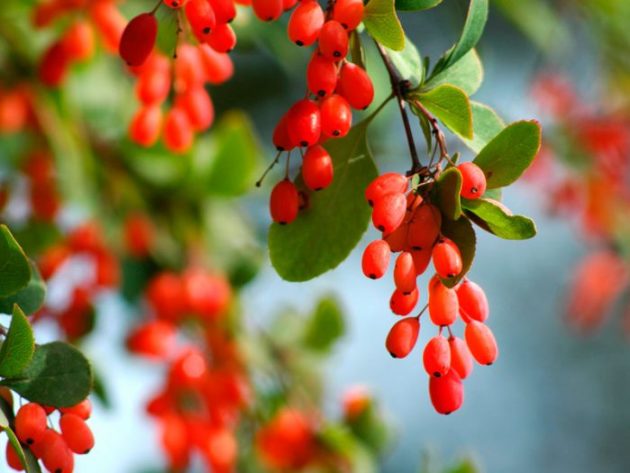
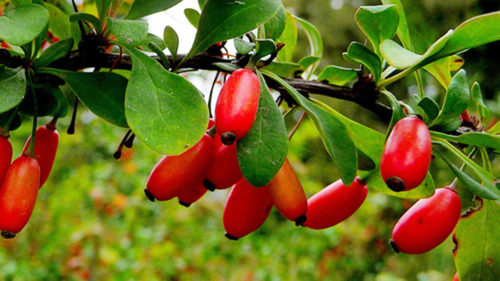
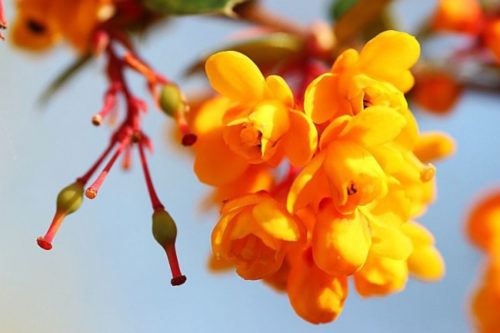
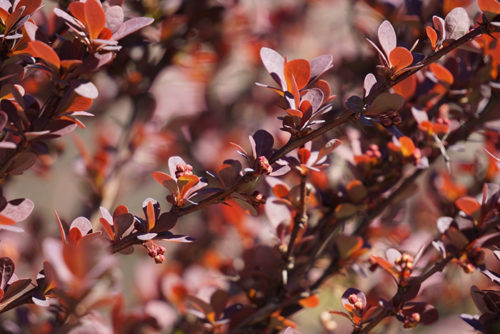
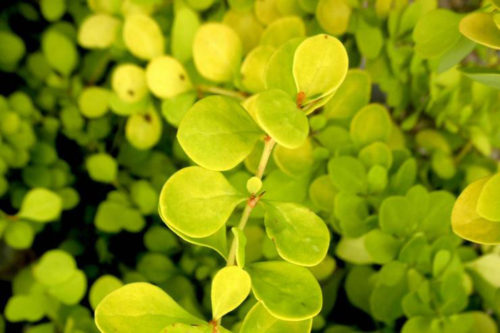
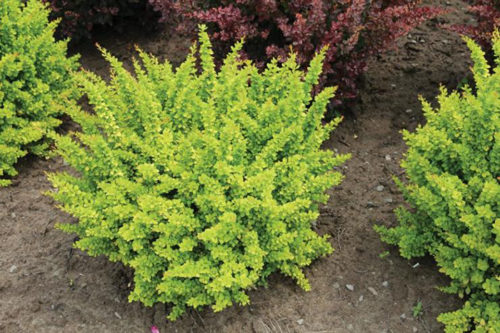
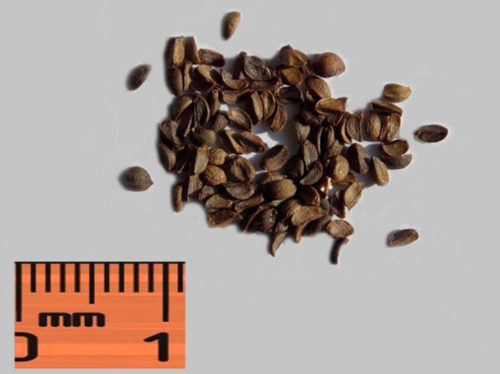
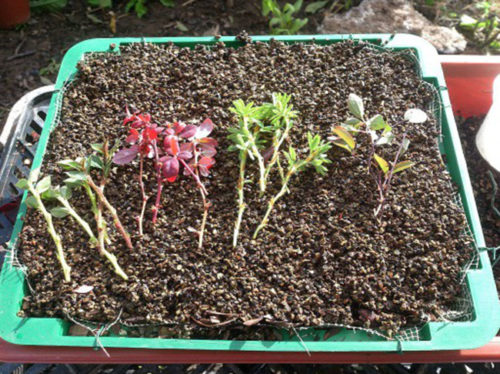
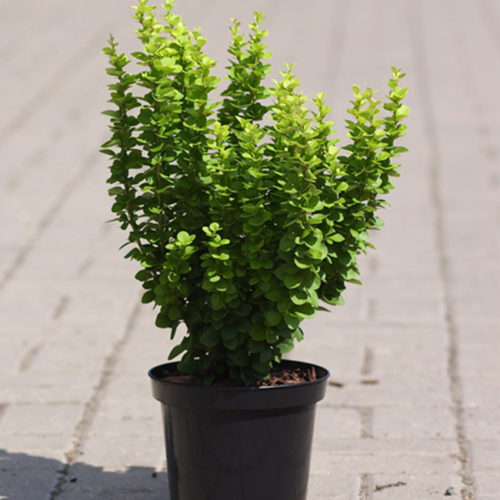
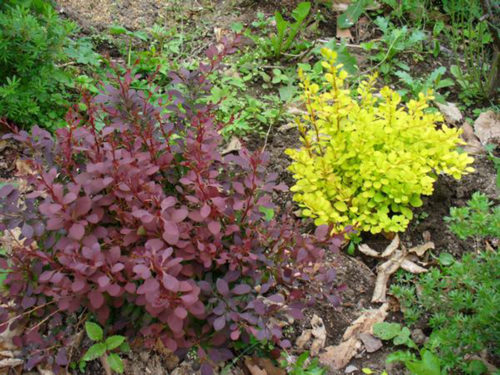
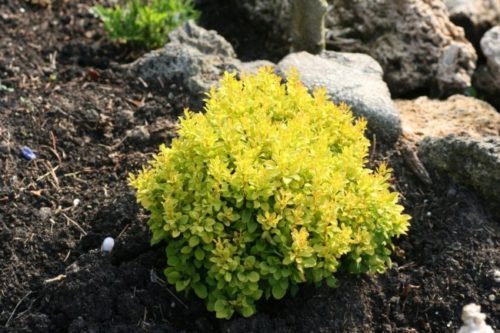
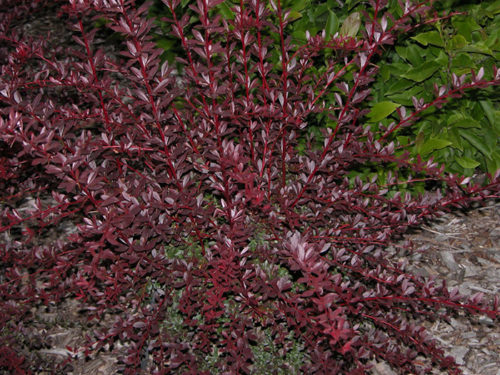
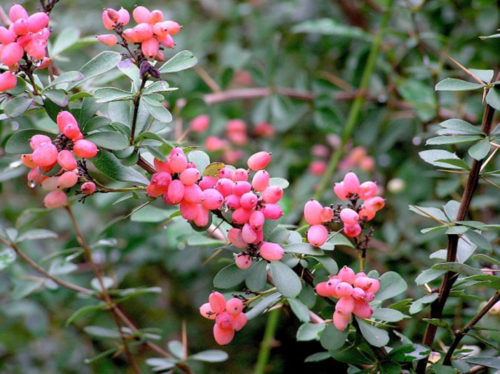

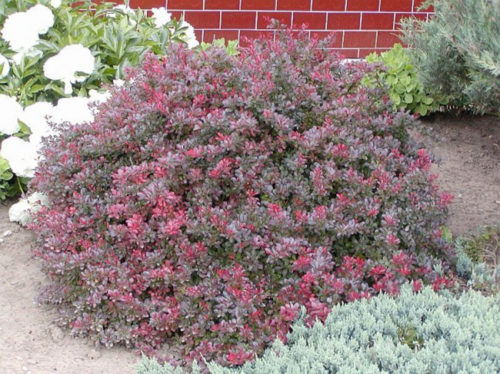
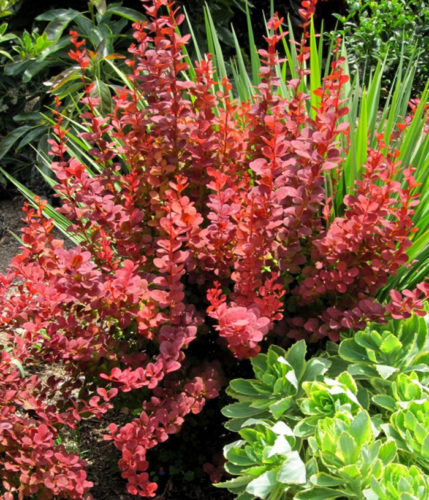
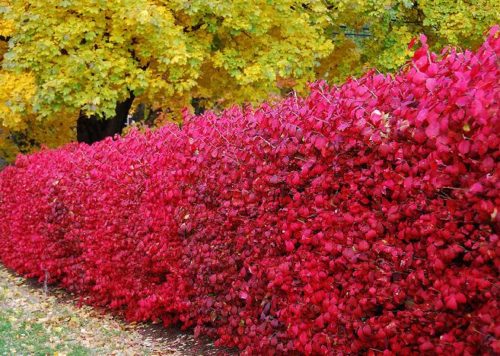












 Start a discussion ...
Start a discussion ...